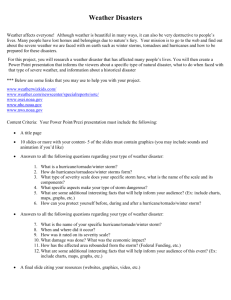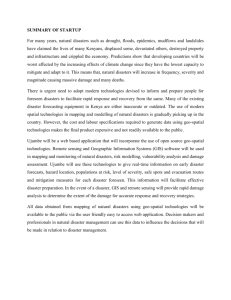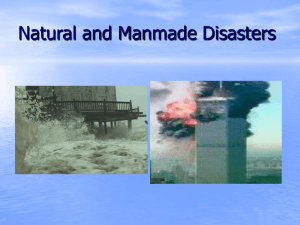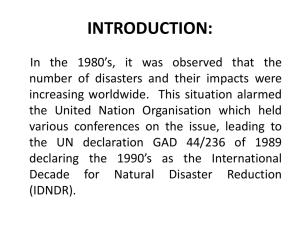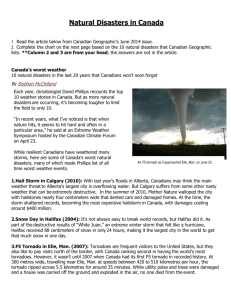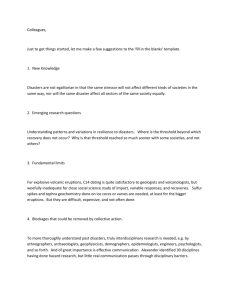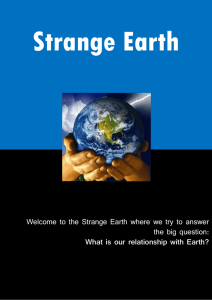opstudynaturaldisasters
advertisement
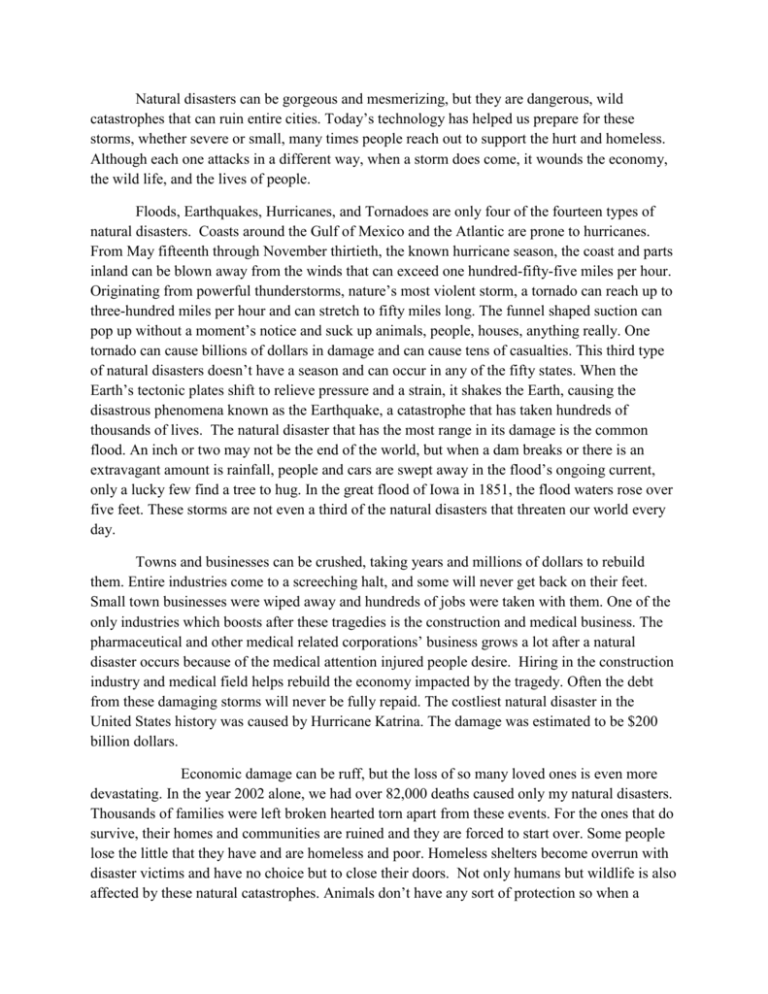
Natural disasters can be gorgeous and mesmerizing, but they are dangerous, wild catastrophes that can ruin entire cities. Today’s technology has helped us prepare for these storms, whether severe or small, many times people reach out to support the hurt and homeless. Although each one attacks in a different way, when a storm does come, it wounds the economy, the wild life, and the lives of people. Floods, Earthquakes, Hurricanes, and Tornadoes are only four of the fourteen types of natural disasters. Coasts around the Gulf of Mexico and the Atlantic are prone to hurricanes. From May fifteenth through November thirtieth, the known hurricane season, the coast and parts inland can be blown away from the winds that can exceed one hundred-fifty-five miles per hour. Originating from powerful thunderstorms, nature’s most violent storm, a tornado can reach up to three-hundred miles per hour and can stretch to fifty miles long. The funnel shaped suction can pop up without a moment’s notice and suck up animals, people, houses, anything really. One tornado can cause billions of dollars in damage and can cause tens of casualties. This third type of natural disasters doesn’t have a season and can occur in any of the fifty states. When the Earth’s tectonic plates shift to relieve pressure and a strain, it shakes the Earth, causing the disastrous phenomena known as the Earthquake, a catastrophe that has taken hundreds of thousands of lives. The natural disaster that has the most range in its damage is the common flood. An inch or two may not be the end of the world, but when a dam breaks or there is an extravagant amount is rainfall, people and cars are swept away in the flood’s ongoing current, only a lucky few find a tree to hug. In the great flood of Iowa in 1851, the flood waters rose over five feet. These storms are not even a third of the natural disasters that threaten our world every day. Towns and businesses can be crushed, taking years and millions of dollars to rebuild them. Entire industries come to a screeching halt, and some will never get back on their feet. Small town businesses were wiped away and hundreds of jobs were taken with them. One of the only industries which boosts after these tragedies is the construction and medical business. The pharmaceutical and other medical related corporations’ business grows a lot after a natural disaster occurs because of the medical attention injured people desire. Hiring in the construction industry and medical field helps rebuild the economy impacted by the tragedy. Often the debt from these damaging storms will never be fully repaid. The costliest natural disaster in the United States history was caused by Hurricane Katrina. The damage was estimated to be $200 billion dollars. Economic damage can be ruff, but the loss of so many loved ones is even more devastating. In the year 2002 alone, we had over 82,000 deaths caused only my natural disasters. Thousands of families were left broken hearted torn apart from these events. For the ones that do survive, their homes and communities are ruined and they are forced to start over. Some people lose the little that they have and are homeless and poor. Homeless shelters become overrun with disaster victims and have no choice but to close their doors. Not only humans but wildlife is also affected by these natural catastrophes. Animals don’t have any sort of protection so when a tornado hits, they are swept into it with no mercy. Unlike our advanced technology and our ability to predict and gauge the strength of a natural disaster, the animals are not often prepared for the impact of the storm. Organizations and helpful citizens chip in and help the storm victims rebuild their lives one day at a time, as well as animal welfare groups that rescue any stranded wildlife. The effects on the economy, wildlife, and lives of people after these tragedies are drastic and impact will forever leave an impression on them all. Thankfully we have recourses to prepare ourselves for these disasters and kind people to help those who have lost a great deal through over a 100,000 natural disasters that strike every year.



